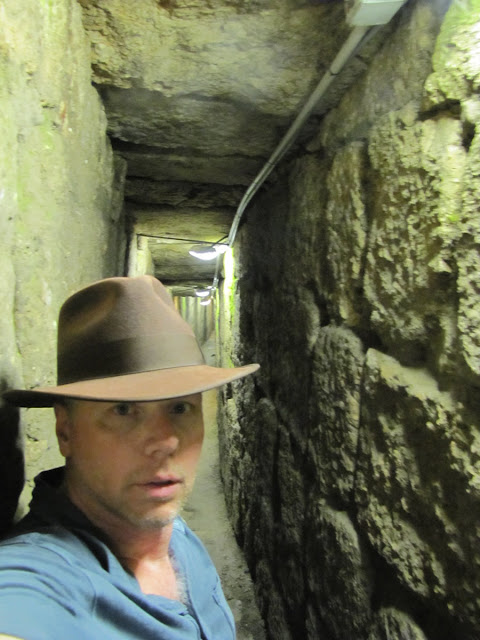Read this story in the today's news:
>>Israel National News<<
CBS News
Washington Examiner
MSNBC
YNetNews
It was interesting to see this blog from BiblePlaces.com that announced the opening of the Siloam Road and the sewer that was built below. This channel has now been opened to extend from the Pool of Siloam all the way up to the Temple Mount.
Here is a link to some of our photos of this street and water channel from this summer:
http://www.generationword.com/jerusalem101/49-siloam-road.html
Generation Word
www.generationword.com
>>Israel National News<<
CBS News
Washington Examiner
MSNBC
YNetNews
It was interesting to see this blog from BiblePlaces.com that announced the opening of the Siloam Road and the sewer that was built below. This channel has now been opened to extend from the Pool of Siloam all the way up to the Temple Mount.
It is now possible to walk along the street and then through the channel from the Pool of Siloam at the south of the City of David up to the Jerusalem Archaeological Park just inside the Old City walls. In the future visitors will be able to exit the tunnel in the Davidson Center, the archaeological museum at the southwest corner of the Temple Mount.Toni and I walked up the steps of this road and through the channel or gutter that ran under the street this summer. The video is here:
Here is a link to some of our photos of this street and water channel from this summer:
http://www.generationword.com/jerusalem101/49-siloam-road.html
Shukron led the Post on a tour of the channel following the announcement on Tuesday afternoon. The channel is about 1/3 of a meter wide and ranges in height from one to two meters, and is between 15 to 20 meters underground. The channel’s clearing also allowed archeologists to see the lower stones of the Kotel that are currently underground, though Shukron dismissed the Kotel stones as the least exciting part of the project.
“You know the Kotel already; that’s already been overdone,” he said, hurrying past the bottom of the Kotel to point out an underground mikve (ritual bath) and an ancient manhole.
“Every rock has a story here,” he said, gesturing to a large boulder in the ceiling. He explained that the boulder had fallen into the arch of the ceiling during the Roman plundering of the city in 70 CE and serves as physical testimony to the violence of the times.
“What this gives us is an understanding of the conditions of the roads in Jerusalem during the Second Temple period. How did the city work? How did the city live? Here you’ve got something important, something interesting, something that you can relate to,” he said.
Shukron also pointed out the remnants of previous explorations, including old wires and writing on the wall in French. He stressed that the channel did not go anywhere near the Temple Mount or the mosques, in contradiction to some claims. The channel follows the Tyropoeon Valley, which is the lowest area in ancient Jerusalem. “That’s why I can’t go up to the Temple Mount, because the Temple Mount is high. There’s no way that a drainage pipe could reach there,” Shukron explained.
The rabbi of the Western Wall, Rabbi Shmuel Rabinowitz, strongly denounced claims that the channel was an attempt to disrupt the delicate status quo in the area.
“No one is digging their way underneath the Temple Mount, both because it’s explicitly forbidden according to Halacha and because it’s simply not possible” he said. “Every attempt to claim that the digging will damage the holy area is an outright lie, whose only goal is unnecessarily and dangerously fanning the flames in a place that is holy to all of the religions.”Galyn Wiemers
Generation Word
www.generationword.com


No comments:
Post a Comment